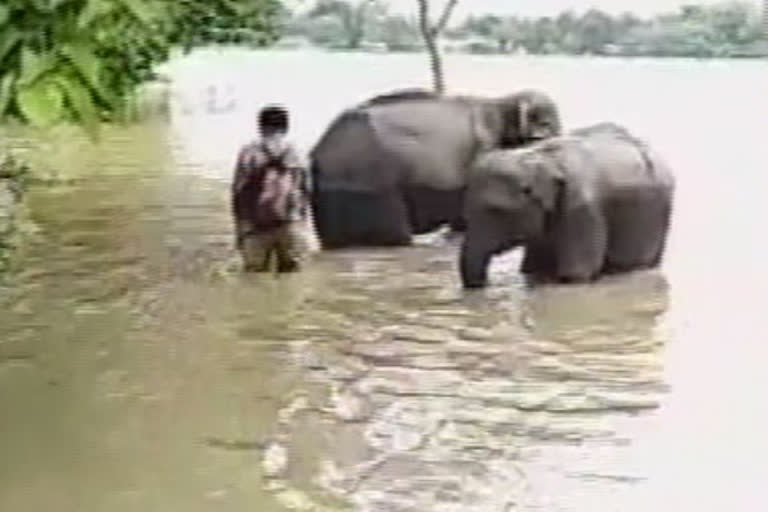Assam: With more than 80 percent of the area of Kaziranga National Park (KNP) - home to the world's largest population of one-horned rhinoceros - in Assam reeling under flood water, animals are being forced to find shelter on higher grounds in the nearby hills of Karbi Anglong district.
In a desperate attempt to flee the deluge, animals are having to cross the busy National Highway (NH)- 37 attached to the national park.
Considering the severity of the situation, local residents living near the national park are extending a helping hand, and rescuing the drowning animals and handing them over to the forest department officials, who are supposed to ensure their rehabilitation.
The forest department is on high alert on the National Highway in order to avoid poaching attempts by hunters.
The vehicles passing through the park area from Jakhalabandha to Numaligarh have been asked to maintain a speed limit of 40km/hour and time cards are also being issued to them in order to ensure the safety of the animals crossing the road.
Every year, the Brahmaputra takes away chunks of land from Kaziranga National Park, so much so that although on paper the park's total area stands at 1,030 sq km, it has actually been reduced to 884 sq km, and is shrinking further.
In 2017, over 360 animals drowned due to floods in Kaziranga, including 31 one-horned rhinos, according to official data.
The flood situation in Assam worsened on Monday, with four more deaths reported from Jorhat, Barpeta and Dhubri districts, taking the total death toll to 13, the Assam State Disaster Management Authority (ASDMA) said in a report.
Also read: 5 more patients die, Assam JE toll rises to 76
Nearly 26.5 lakh people across 28 districts have been affected by the floods so far. The communication between upper and lower Assam also got disrupted as the NH-37 near Kaziranga National Park submerged in water. State authorities have put restrictions on the entry of lightweight vehicles on the national highway.



